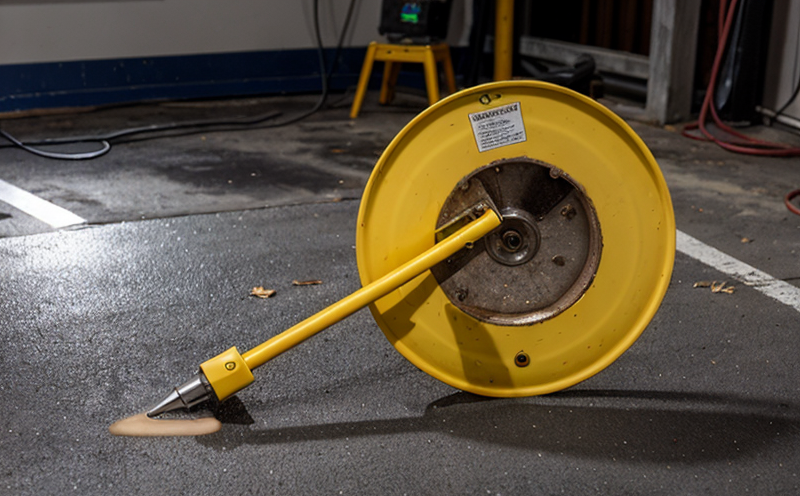ISO 15548 Eddy Current Testing of Metallic Materials
The ISO 15548 standard provides a comprehensive framework for the eddy current testing (ECT) of metallic materials. This service is designed to evaluate the integrity, thickness, and presence or absence of flaws in metallic components used across various industries including aerospace, automotive, electronics manufacturing, and medical devices.
Our laboratory adheres strictly to ISO 15548, which sets out the guidelines for ECT procedures. The process involves the application of alternating electromagnetic fields to materials, generating eddy currents within conductive parts. These currents are measured to infer properties such as conductivity and thickness. This method is particularly useful for inspecting complex geometries or inaccessible areas where destructive testing would be impractical.
For our customers in aerospace manufacturing, ECT ensures the quality of critical components like turbine blades or fasteners without compromising their structural integrity. In automotive applications, it helps identify potential issues early on, enhancing reliability and safety. For electronics manufacturers, this service is essential for ensuring that intricate circuit boards are free from defects that could lead to failures.
In addition to its practical benefits, ISO 15548 ECT also aligns with broader quality management systems such as ISO 9001, providing assurance of consistent and reliable testing practices. The standard requires the use of calibrated equipment and trained personnel, ensuring accurate and repeatable results.
Our laboratory employs state-of-the-art eddy current testers capable of performing detailed inspections at high precision levels. Specimen preparation involves cleaning and degreasing to eliminate external factors that could interfere with the testing process. Calibration is performed regularly to maintain accuracy over time.
The results from ISO 15548 ECT are reported in a structured format, highlighting any anomalies detected along with their location and severity. This information can then be used for corrective actions or further analysis. Our reports comply with relevant international standards, making them easily integrable into existing quality control processes.
- Eliminates the need for destructive testing methods
- Provides real-time data on material properties and flaws
- Enhances reliability by detecting defects early in production cycles
- Saves time compared to other non-destructive evaluation techniques
Industry Applications
The versatility of ISO 15548 ECT makes it applicable across numerous sectors. Aerospace manufacturers benefit from its ability to inspect complex geometries and thin-walled structures without causing damage. Automotive companies use this service during quality assurance stages, especially for parts that undergo high stress conditions.
In electronics manufacturing, ECT helps ensure the integrity of printed circuit boards (PCBs) by identifying issues such as plated-through holes or solder joint defects before they become operational problems. Medical device manufacturers rely on it to guarantee the safety and effectiveness of implanted components.
Our expertise extends beyond these examples into other fields where precision and reliability are paramount, demonstrating our commitment to meeting diverse industry needs with tailored solutions.
Environmental and Sustainability Contributions
- Reduced Material Wastes: By identifying defects early in the manufacturing process, ISO 15548 ECT helps prevent unnecessary production runs leading to reduced waste generation.
- Saving Energy: With fewer rejections due to quality issues, there's less need for additional manufacturing steps, thus saving energy resources.
- Promoting Recycling: Ensuring only high-quality products reach the market means more efficient use of raw materials and better end-of-life recycling opportunities.
Competitive Advantage and Market Impact
Adopting ISO 15548 ECT positions companies at the forefront of technological advancements, offering significant competitive advantages. Early detection of flaws allows for timely interventions which can prevent costly recalls or product failures.
This service fosters innovation by enabling continuous improvement in manufacturing processes and designs based on accurate and reliable data. Compliance with international standards like ISO 15548 also enhances brand reputation, attracting more customers who value quality assurance.
The demand for sustainable practices continues to grow across industries, making this service not just a technical requirement but an integral part of corporate social responsibility strategies.





